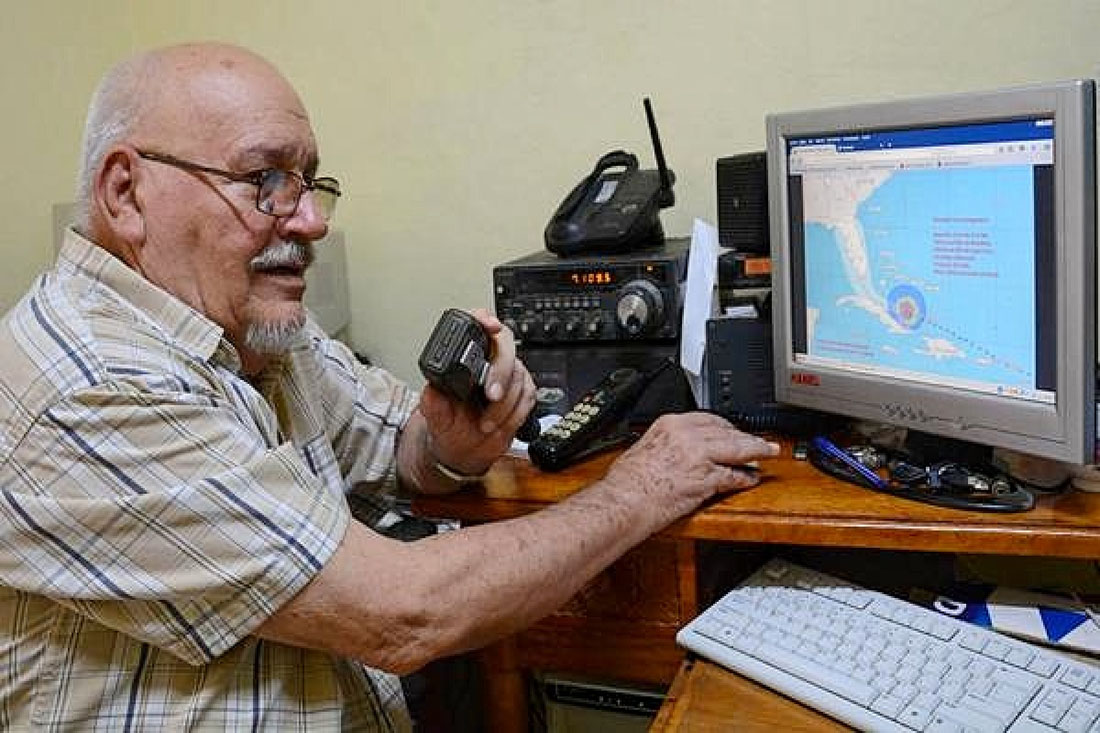It may seem strange to talk about radio amateurs in current times where the Internet and other information and communication technologies (ICT) overflow the globe, however, not many have thought that before Facebook emerged in 2004, radio amateurs already had their own social network.
Haven’t you thought about it? Well, I’ll explain: Radio amateurs were the pioneers in exchanging voice messages or by telegraphy in Morse Code and participating in collective chats, thus consolidating friendships with oceans in between.
Some connoisseurs and members of that Cuban federation define it as a “way of living and serving the people around you. It is a pastime that promotes culture, knowledge, solidarity, camaraderie and plays certain social functions”.
These types of contacts are possible today, thanks to the discoveries that scientists such as the Russian Alexander Popov, the Croatian Nikola Tesla and the Italian Guillermo Marconi made at the end of the 19th century and opened the way to wireless communications.
The birth of amateur radio worldwide gave way to what would later become radio as a means of communication, since both are based on the same principle: equipment that emits and receives electromagnetic signals through the radio spectrum.
The same format has made necessary technological advances such as Bluetooth, cell phones or Wi-Fi connections a reality today.
Origins
Every April 18th, amateurs from around the world take to the airwaves to celebrate World Amateur Radio Day. It was on this day in 1925, that the International Amateur Radio Union was created in Paris with the objective of supporting amateur radio worldwide.
It has been proven that before the date that Cuba has framed the first radio transmission, on August 22nd, 1922 with the station 2LC of Luis Casas Romero, several radio amateurs in the country had already taken the lead and experimented and chatted on the radio, suggests the volume Memorias de la Radioafitación en Cuba.
The subsequent growth of this guild in the country was characterized by following development patterns similar to that of the United States, from where equipment, parts, pieces and fundamental publications are imported.
In 1938 through the “Radio Club de Cuba” our country joined the International Amateur Radio Union (IARU) and previously in various radio conferences and conventions, as part of government delegations.
It is not until July 15th, 1966, through Law 1198 that the Federation of Radio Amateurs of Cuba is constituted, and it is proposed to integrate all the groups of radio amateurs that exist in the country.
Its work in Cuba
One of the facets of amateur radio, and perhaps the best known by the people, is undoubtedly its work in emergencies due to natural disasters and extreme situations. It is difficult to find in the last 80 years one of these events – in any country – in which the work of local radio amateurs does not come to light.
Cuba as a country is not an exception, on the contrary it is and will always be a demonstration of this spirit of bonding with the community and the Homeland, which marks the work of lovers of radio broadcasts.
They can be pointed out as an example of the selfless and almost always anonymous work of Radio Amateurs in times of danger: Hurricane Paloma that hit and destroyed part of the town of Santa Cruz.
In those terrible moments, the radio amateurs were for several days, practically the only way of communication to and from the place, when all other modern technologies collapsed before the onslaught of strong winds and rains.
That is not the only case. Many more examples could be remembered in practically all the territories of a country that, due to its geographical location, is constantly exposed to natural disasters. In Cuba, Radio Amateurs are part of the Communications System of the Defense Councils at all levels.
Camagüeyanos
I know that there are a large number associated with this difficult task, but I know a member of the group, who at many important events I have seen in action and I know that he not only enjoys his transmissions, he takes them very seriously and puts them on the service of the territory in periods of elections, defense exercises and times of contingencies.
I remember that for the 490th anniversary of the city, the historic center was a hive of construction works and cultural preparations for the great occasion, I was a cultural journalist on Radio Camagüey and in an improvised car radio with a plant and a mobile transmitter, we traveled to different points of the city and from there we reported.
On one occasion I had to go out with Luis Milán, the radio amateur I am telling you about, who is also a sound producer at the provincial radio station and thanks to his contacts, we were able to establish communication with places that we did not imagine and were also producing for the celebration of the city from a distance.
Tribute
After all these notes and memories, I cannot stop to recognize the recklessness and desire to transmit peace and love of these radio amateurs, who in the harsh times of the pandemic, also sought alternatives with their teams, to tell the world and meet in turn, how the hope of a vaccine was advancing and Cuba almost had it in hand.
Congratulations for your work, which 97 years after meeting in Paris for the first time, this current celebration inspires you to continue weaving ties of friendship from your own social network.
Translated by: Aileen Álvarez García






